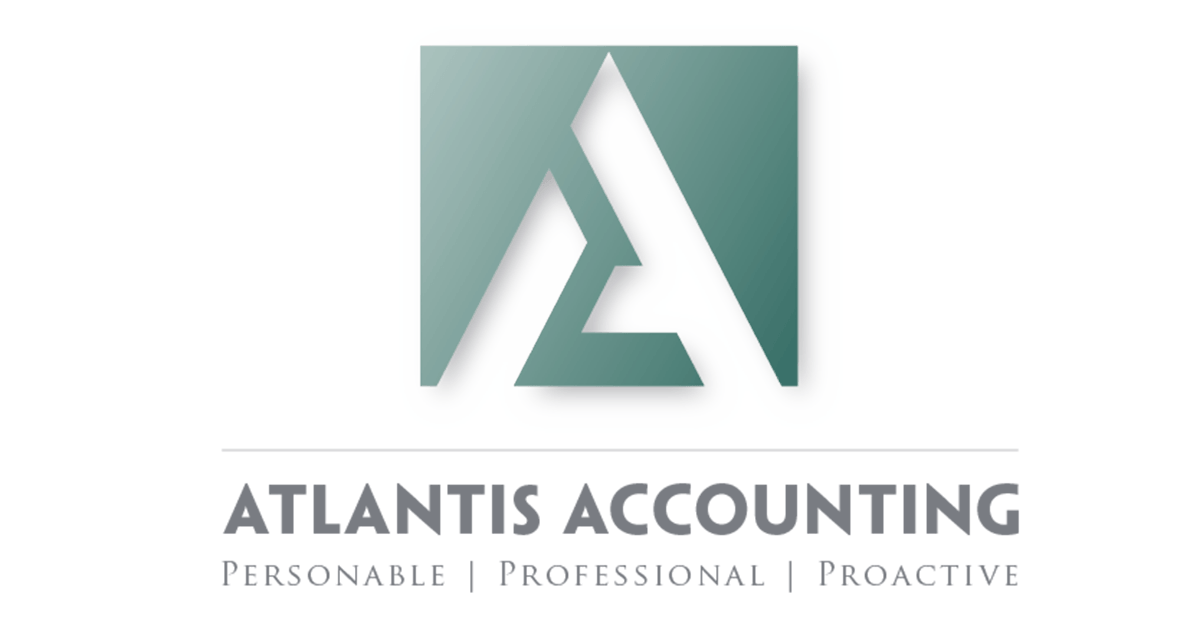
Like the sole proprietor, a partnership is not taxed at the partnership level. Instead, a partnership is considered a pass-through entity, meaning the profit or loss generated from the partnership is passed to each partner via schedule K1 and is taxed on each partner’s own income tax return. To generate a K1 the partnership must calculate its profit and loss by subtracting the eligible business expenses from total revenue. Next, each partner’s income / loss share is determined by the total profit / loss percentage ideally dictated in the partnership agreement. For example: Vicki and Michele form an architect LLC with Vicki contributing $30,000 and Michele, $70,000. Profit/loss is divided along the lines of their investment in the business, so the profit-sharing percentage is 30/70 between Vickie and Michele. Let’s say the business generated $100,000 and paid $90,000 in expenses. The net profit of $10,000 will be passed through to Vicki $3,000 and $7,000 to Michele. If both are actively running the business together, then both will have to pay Social Security and Medicare taxes calculated on schedule SE – Self-employment Tax. This is to recognize that they are both employer and employee and pick up the expenses accordingly. At first glance, this may seem complicated, however they are also entitled to take half the SE taxes and deduct them on their returns. Since partnership returns (form 1065) are information returns with no income taxes due upon filing; no income taxes are required to be withheld. It is the partners’ responsibility to estimate the share of the profit they will receive and estimate and pay the taxes due. As we are a “pay as you go” income tax system, interest will be accrued if estimated taxes are not paid when the income/revenue is earned. The interest will be added on to the taxes owed when partners file their individual income returns. This might come as a surprise – even if the partners did not take any profit out of the business and decided to leave the cash in the business to pay for anticipated expenses. The tax owed did not take that into consideration; the point being revenue is taxed when earned not when it is withdrawn. On the other hand, business expenses are usually recognized in the year paid which offset the business revenue. Below are some common expenses: Auto Expenses: business usage portion, including mileage, repairs, insurance, etc. Depreciation: is money paid for Fixed Assets which are expensed over time depending on the type of assets Legal and Professional Fees: fees paid to attorneys, CPAs etc. Insurances: professional liability insurance, director’s insurance, etc. Travel Expenses Interest on business loans, not interest on taxes owed Equipment: may be able to elect section 179 and expense them in the same year instead of amortizing the expenses over a period of 3 to 7 years (or longer) Education Expenses: if continued education courses or other business improvement classes are required Taxes: paid to state and local, not federal Advertising In addition to these common business expenses, setting up a suitable retirement plan will not only decrease the current tax liability, but it will also help save for retirement. Depending on the structure of the business, cash flow and the goals of the business owners, a suitable retirement plan is yours if you act. Friendly reminder: some retirement plans are subject to ERISA regulations and some are required to be set up before the end of the tax year; some require owner’s match to the employee’s contributions while some are contributed from business profits, etc. Please consult with a financial advisor along with your third-party administrator to help custom design an appropriate retirement program to suit your goals. If you need a consultation or a second opinion, here is the link to access my appointment calendar, https://square.site/book/9AXE057BXPYYG/annie-hung-scanga. ——————————— Disclaimer: To the best of my knowledge, I wrote this article in general terms as each person’s situation varies. Tax laws do change from time to time. No guarantee is made or claimed through this article. Personalized advice is recommended to consult’s one’s own advisor or contact the author.

INCOME TAX RETURN FILINGS There are numerous business structures to choose from. If you start a business by yourself, you would be a sole proprietor and file a schedule C — Profit or Loss From Business for your business when you file your individual income tax returns forms, and submit them all together. Simple. You may also have one or more state tax returns to complete. On the other hand, if you decide to incorporate your business as a single member LLC, you still file a schedule C as described above. The main reason as to incorporate your business is to shield you from any potential liability or lawsuits. PAYROLL TAXES As you are an owner and employee, you would have to pay payroll taxes as both; the applicable taxes are calculated in a schedule SE — Self-Employment Tax, which is also filed with your form 1040 and a schedule C. BUSINESS CHECKING ACCOUNT Whether you apply for a separate Employer Identification Number (EIN) or not, I recommended that you open a business checking account to separate business transactions from your personal ones. Aside from the legal perspective, having a business account keeps business/tax records clear and readily available for tax filing. BUSINESS EXPENSES What could be construed as business expenses? Postage, office rental, CPA fees etc. just to name a few. Let’s look at some business expenses item in depth. Cell Phone: monthly phone bills are reduced by the portion that is used for business. Restaurants: half of the meal expenses for taking clients out, or business luncheons can be deducted. The reason for deducting up to half is because you enjoy half of the meals, and the other half paid for your business client, is considered “business expense”. To claim Home Office expenses, you need to set aside a designated space which is regularly and exclusively used for business purpose. Thus all applicable expenses for maintaining this space can be classified as a business deduction on your returns and you will have the documentation to support it in case you get challenged (for more detailed discussion, please refer to my article titled, “Home Office”, https://www.hungscanga.com/tax/home-office/, ). For vehicle usage, you should log your mileage: “to” and “from” for business trips/purposes in order to provide proper documentation for deprecation amounts and other related expenses. Estimated Taxes If you are like me, I don’t like to pay taxes, and definitely avoid paying interests/penalties. If you owe a lot of taxes on your income tax returns, interest will be added on top of the taxes you owed, because our income tax system is designed as “pay as you go”. No one is withholding any income taxes when you make money, you are the boss and you are the one who is responsible for paying the estimated taxes to Federal Government and to the State. Over the years, I have had clients whose revenue is not evenly generated throughout the year, and the income taxes/interest owed are calculated assuming it is. As a result, my client ended up owing interest when he should not. If your income is seasonal, you want to let your CPA know when she/he prepares and files your returns for you if you estimate your own taxes during the year. RETIRMENT PLANS From an Individual Retirement Account (IRA), ROTH IRA, to a Simplified Employee Pension IRA (SEP IRA), and an Individual 401k plan, the contribution/deduction amounts, the reporting requirements, the annual custodian fee, the benefits are not the same. For a small businesses just starting out with no steady income/profit, IRAs serve the purpose while a cash rich business might need to set up an individual 401k plan to tuck away the money instead of paying a good portion of what you make to the government, and miss out the opportunity of saving for your retirement. Which type of retirement plan suits you the best depends on your cash flow, your life goals and business plan. One thing these retirement plans have in common is: you cannot take the money out before you reach age 59 1/2 without paying income taxes and penalty (with the exception of ROTH IRA assuming certain conditions are met). Lastly, once you set up the retirement plan/account and contribute money into it, you won’t just let the money sit in the account making little interest, will you? Where will you invest that money? Stocks? Bonds? Mutual funds? Real Estate? As you have heard plenty of times: the investment mix should be driven by the number of years that you want to stay invested in and your risk tolerance (in other words, are you able to sleep when the market drop 30%?) If you need a consultation or a second opinion, here is the link to access my appointment calendar, https://square.site/book/9AXE057BXPYYG/annie-hung-scanga . Stay safe! Disclaimer: To the best of my knowledge, I wrote this article in general terms as each person’s situation varies. Tax laws change from time to time. No guarantee is made or implied through this article. Personalized advice is recommended by consulting one’s own advisor or the author.

So, What is a trust? One of the Definitions of a Trust by Merriam-Webster is: a property interest held by one person for the benefit of another Per Fidelity: A trust is traditionally used for minimizing estate taxes and can offer other benefits as part of a well-crafted estate plan. This is how I describe it – Trust is a separate tax entity created by an individual to transfer some or all of his/her asset to a Trust based on the objective(s) he/she intends to accomplish for the benefits of himself/herself and/or another individual(s) / entity. COMPONENTS OF TRUST Grantor: the person who creates the Trust and transfers his/her assets into it. Trustee: the person who oversees the assets being held in the Trust for the benefits of the beneficiary. The Trustee duties includes but are not limited to administrating, accounting, etc. The Trustee has a fiduciary duty to the beneficiary. Beneficiary: the person who receives the “benefits” of the Trust. GRANTOR TRUST (Note: there are many different types of trust. For this article, only the Grantor Trust is discussed in detail.) Although there is a named Trustee, the Grantor could manage the assets/investments held in the Trust and change the beneficiary, the income distribution amount, etc. and is also the beneficiary of the Trust. This kind of trust is often called as Revocable Trust and/or Living Trust. Some of the Grantor Trust rules outlined by the IRS are as follows: The ability to modify the beneficiary of a trust The ability to borrow from the trust without appropriate collateral The ability to use income from the trust to pay life insurance premiums The ability to make changes to the trust’s assets make-up by replacing assets with those of equivalent dollar amount However, Grantor Trusts could be Irrevocable Trusts as well if they retain none of the controls. INCOME TAX IMPACT If the grantor retains access to the income and management of the Trust, then the income will be passed on and reported on the grantor’s individual income tax returns. Otherwise, the Trust will report its own returns. FEDERAL ESTATE TAX IMPACT For Non-Grantor trusts, since Grantors have no control over the assets being transferred to the Trust, the assets are therefore excluded from the grantor’s estate. However, if the transferred (gifted) asset amounts exceed the annual gift amount permitted, filing a gift tax return is deemed necessary. PURPOSE OF GRANTOR TRUST The ownership, control, receipt of trust income or use of principal are all factors to determine whether the Trust is considered a separate entity from the grantor, and hence determines who (Grantor or the Trust) is to report the income generated from the Trust and whether the Trust is able to be excluded from the Grantor’s estate. Further, the type of assets being transferred to the Trust is governed by various income tax rules. One of the important tax advantages is capital gain exclusion on the sale of primary residence if ownership and occupancy conditions are both met (please refer to my other blog titled, “The Income Tax Capital Gain Exclusion on Home Sale”). Therefore, some benefits of the trust are: To avoid probate: the most common reason For Elder Care or Long-term Care Planning: by transferring the owner’s assets to a trust reducing the owner’s assets to help qualify for the Medicaid funding of the owner’s long-term care _______________________________ Disclaimer: To the best of my knowledge, I wrote this article in general terms as each person’s situation varies. Tax laws change from time to time. No guarantee is made or implied through this article. Personalized advice is recommended by consulting one’s own advisor or the author.

This past tax season, there seemed to be some confusion about claiming Home Office deductions. Below I took part of the definition from Internal Revenue Service’s website, and the link, https://www.irs.gov/businesses/small-businesses-self-employed/home-office-deduction , to hopefully address it in plain English. Two Methods are available to calculate eligible Home Office expenses Simplified Option – For taxable years starting on, or after, January 1, 2013 (filed in 2014), tax payers now have a choice to elect Simplified Option. In a nutshell, IRS has pre-determined/”packaged” a “rate” to include applicable Home Office expenses and all you have to do is use this “comprehensive/all inclusive” rate multiply the square footage of the home office to get the expenses that you are allowed to deduct on your returns. This way, you don’t have to keep track actual expenses occurred, nor to have the receipts put in a show box. If you adopt this approach which will help reduce the time and burden of preparing your returns. Regular Method—one must use actual expenses occurred by category and times the space devoted exclusively for business usage. Note: please see example demonstrated in the “ Indirect Expenses ” below for clarification. Requirements to Claim the Home Office Deduction Regardless of the method chosen. there are two basic requirements for your home to qualify for deductions: Regular and exclusive use. Principal place of your business. These two requirements are not either/or; both of them have to be met in order to claim the Home Office deduction. Regular and exclusive use You have one room or a “well marked” (defined) area that is solely utilized for business tasks including; meeting with clients/customers, processing invoices, marketing research, etc. You don’t use that room/area as children’s playroom, or as your workout place. It is used just for “business” purpose and for that purpose alone at all time. Principal place of your business There are no other places outside of your home that you use to conduct business. Although you might meet clients at their place, or at restaurants, you use your home office most of the time. However, if you do meet clients/customers at home office as well as other locations, IRS’s position is you may be still able to qualify for the home office deduction. Please note that to simplify Home Office deductions in this article, the focus in on self-employed or sole proprietors. For employees, from 2018 through 2025, you won’t be able to deduct any home office expense since the Tax Cuts and Jobs Act (TCJA) suspends miscellaneous itemized deductions subject to the 2% floor for this time period. For more conservative clients, they are concerned and focused on “may” be eligible for deducting the Home Office expenses. If you could define an area or designate a room just for your business, it is rightfully so to claim the expenses. You just have to “follow the rule” and document well, in my humble opinion. What can you deduct as Home Office expenses? There are again two main categories – direct and indirect expenses. Direct Expenses Those expenses are directly associated with your Home Office. Just to name a few: desk, chair, paintings on the wall. You could deduct 100% of the money spent on your Home office. Indirect Expenses On the other hand you could only deduct a portion of business usage for indirect expenses like: property taxes, mortgage interests, utilities, and home insurance premiums paid. For instance: if your Home Office accounts for 10% of your house, and the property taxes is $14,000 for any given tax year. On your tax return, you will be deducting $1,400 property taxes on your returns, while the balance ($14,000*90%) will go on to your schedule A deductions and subject to any tax rules/calculations/limitations. Now, can you see the “power” of Home Office deductions? The $1400 in the example listed above are dollar for dollar deductions off of your business income/revenue, as opposed to being deduced on schedule A, which are subject to some limitations due to your household taxable income level and other variables. Also, please pay special attention to Depreciation Expenses. Depreciation expenses are deductions allowed for the wear and tear on your house for the home office portion. The catch is, later on, when you sell your house, the depreciation that you once deducted has to be recaptured (reducing the cost basis of your house), and as a result, it may or may not trigger any capital gain. For more details, please refer to IRS Publication 587 , or consult your CPA. If you need a second opinion, or would like to engage my service, I am here to help. ___________________________ Disclaimer: To the best of my knowledge, I wrote this article in general terms as each person’s situation varies. Tax laws change from time to time. No guarantee is made or implied through this article. Personalized advice is recommended by consulting one’s own advisor or the author.

Quite a few people come to me start by saying, “ I use Turbo Tax….” Scenario 1 “ I use Turbo Tax to prepare my returns. Would you please check if my returns are correct?” Believe it or not, it will be easier and supposedly in my humble opinion more accurate if I just prepare it based on the tax documents and run through my high-priced professional tax software. The simple reason is the logic and programming built into the software, and I have used both software and read their “returns” and what appeared to me that I pay more for a reason. Otherwise, I would have bought Turbo Tax ® to prepare returns for my clients! Scenario 2 “ I use Turbo Tax to prepare my returns, and Turbo Tax did it incorrectly.” With all due respect, a software program will just do what you ask (unless there is an Artificial Intelligence version out there that I don’t know about). The disconnect is “communication” – the software asks you one thing, and you think you know what is being asked and responded accordingly which isn’t what was being asked. Words on the street is tax preparers just “plug in the numbers”. Yes, that is the first step. But, behind the scenes, I (can’t speak for everyone) check and double check the returns by verifying my input, see if the returns make sense and verify the “numbers” are going in to the right places. Ask my colleague, Jim, he would tell you how thorough and detail oriented I am. When comparing to last year’s returns, I check for inconsistencies which may need to be addressed, corrected or added. Furthermore, I will also look for some tax planning opportunities for the following tax year. What “I use Turbo Tax” implies to me: The returns must be right since the software isn’t cheap and the commercial is on TV or whatever media all the time. It must be correct, but is it? The price is not the cheap part, it probably right though. When I hear “I use Turbo Tax”, I ask myself the following questions: Does the user think Turbo Tax is as good as a real person who knows the tax rules? Does the user think using Turbo Tax guarantees to do the returns correctly? Does the user think he/she is able to use Turbo Tax is an accomplishment in itself? Does the user think that he/she saves a lot of money by getting the returns done? Does the user think getting returns done are the same as getting the maximum deductions possible? Further, what makes the user so confident about using Turbo Tax? Is it because their parents or people they know all use it? Or is it because it spills out the returns and they look right? Is it because the IRS and the states accepted their returns when they use Turbo Tax? Or is it because they didn’t get audited? I wonder. What gives them the confidence of using Turbo Tax or any software for that matter? I remember vividly the first year I started working on a tax returns. After completing 4 years of college and then another 2 years to earn my MBA degree, I used a tax software, but I didn’t feel confident that I did it right. I looked up the IRS publications and read them. Was I just lacking self-confidence? NO. I just want my returns to be done right. I do not want to risk being audited. I want to take every deduction possible. That is just me. How about you? _______________________ Disclaimer: To the best of my knowledge, I wrote this article in general terms as each person’s situation varies. Tax laws change from time to time. No guarantee is made or implied through this article. Personalized advice is recommended by consulting one’s own advisor or the author.







